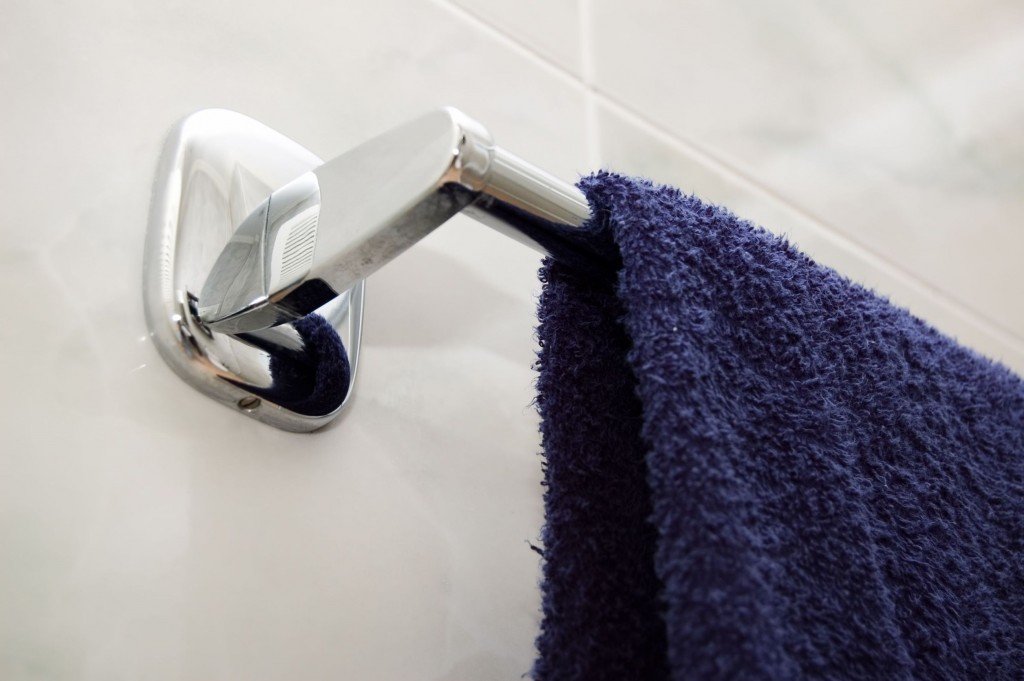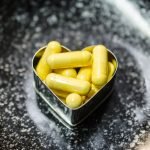Jacob Schor, ND, FABNO
A study published in November of 2013 suggests something rather peculiar – that exposure to very dilute laundry bleach may protect against radiation dermatitis. If you’ve ever followed a cancer patient as he or she went through radiation treatment, you know what radiation dermatitis is. Radiation damages the skin, causing what might be less euphemistically described as causing an industrial sunburn, or, more accurately, as producing human jerky. Bleach may prevent this from happening, at least to some extent.
The Search for a Mechanism
A dermatologist named Thomas Leung from Stanford University reported on a pair of trials in which mice were bathed in diluted bleach (hypochlorite). Dilute bleach baths have been used for years to treat eczema, without anyone really knowing why they helped.
One theory was that bleach, being antimicrobial, killed off bacteria that were causing the eczema. A 2009 paper by Amy Paller et al suggests that bleach baths are effective at lowering Staph aureus populations on the skin.1 While this sounds like a plausible explanation, there is debate, and many consider the bleach dilutions used were too weak to have any antibacterial effect.
Really dilute bleach is used to treat eczema, 0.005% sodium hypochlorite, or about 1 part laundry bleach to 1000 parts water. Leung offers a different explanation for the benefit of bleach.2 His research group first examined how diluted bleach affects inflammation; eczema is, after all, inflammation.
The researchers first examined the effect bleach has on nuclear factor-kappaB (NF-κB). This signaling protein triggers the recruitment of inflammatory cells to sites of infection. Leung’s team exposed human skin cells to the bleach dilution used to treat eczema for an hour and found that it blocked NF-κB signaling. The bleach oxidizes the molecule responsible for activating NF-κB, thus stops the inflammatory cascade from being initiated. By blocking this activator, the bleach inhibits the NF-κB inflammatory pathway.
This is ever so interesting and opens multiple possibilities. NF-κB is kind of the common denominator of most inflammatory reactions; it “regulates cellular responses to inflammation and aging, and alterations in NF-κB signaling underlie the pathogenesis of multiple human diseases.”2
Leung’s team tried dilute bleach on mice to see if it influenced radiation dermatitis, as this reaction is instigated by NF-κB.2 They also tried bleach on the aging skin of healthy but old mice.
In the radiation experiment, the mice were placed in either a dilute bleach bath or a water bath, for 30 minutes daily for 10 days prior to radiation treatment. The radiation burns on these “bleached” mice were milder and healed faster than those on the mice who had only been exposed to water baths.2
Similar benefits were seen in the old mice. Daily bleach baths “… increased skin cell production, resulting in thicker, younger-looking skin than old mice that took plain water baths. In addition, they had lower expression of two genes classically associated with ageing. The effect was short lived, however. The rejuvenated skin returned to its elderly look after about two weeks because the action of bleach on NF-kB is mild, and diminishes with time.”2,3
This might be a surprisingly simple way to reduce radiation dermatitis. Nasty skin reactions can force postponement of radiation treatment and reduce its effectiveness at preventing cancer recurrence. Preventing these skin reactions might improve long-term survival.
Bleach may do more than prevent these skin reactions in cancer patients. NF-κB “plays a critical role in cancer development and progression” and is a “a key pathway in activation of immune responses” and this “activation may also affect the cancer’s response to therapy, making it less susceptive to radio and chemo treatment.”4
We already encourage cancer patients to take many of the supplements that lower NF-κB. These include green tea (Camellia sinensis),5 curcumin (Curcuma longa),6,7 quercetin,8-10 black cumin (Nigella sativa),11 resveratrol, and other polyphenols.12 A daily dip in the bleach might help cancer patients in other ways.
This study draws my attention because it is so counterintuitive; it’s backwards from what you would expect: bleach is a nasty, caustic oxidant. It should hurt, not help.
Hormesis
One way to understand this is to see this as an example of hormesis. In toxicology, hormesis refers to the phenomenon in which a graph of a substance’s toxic effects takes on a j-shaped or u-shaped curve. Low doses can sometimes produce the opposite effect of higher doses. It’s like homeopathy’s Law of Similars; just skip the infinitesimal dilutions where there is nothing left except good vibrations. Concentrated bleach will burn the dickens out of your skin, but in tiny amounts, bleach will protect and heal the skin.
Understanding hormesis may be key to our understanding other therapies we employ in naturopathy. Many of the phytochemicals we value so much are toxins produced by plants for self-protection. Curcumin, resveratrol, quercetin, and others among our valued phytochemicals are actually insecticides, antifungals and neurotoxins. Plants make them to ward off predators and kill infectious microbes. When we use them, it is for their hormetic action. Exposure triggers an adaptive response in the body, recruiting resources to neutralize potential injury.
So what exactly is a 0.005% hypochlorite bleach solution? Generic bleach is typically about 3-6% sodium hypochlorite. To reach this dilution one would dilute 1 part bleach with about 1000 parts water. An average bathtub contains about 100 liters of water, more or less, so 1/10 liter, or 100 ml of bleach (3.4 oz, or about ½ cup) would produce approximately this dilution. Of course, bathtubs vary greatly in size, but this gives you an approximate idea.
This is close to the dilution that various websites suggest to treat eczema. For example, the National Eczema Association13 and the American Academy of Allergy, Asthma and Immunology14 both suggest ¼ to ½ cup.
While these data come from animal experiments, there seems to be little risk in translating them into treatment protocols for people. As mentioned, bleach baths are already used to treat eczema. It seems easy enough to incorporate them into a treatment for cancer patients as well.
 Jacob Schor, ND, FABNO is a 1991 graduate of NCNM and has practiced in Denver for the past 17 years. He served as president of the CANP from 1992 to 1999. He has served on the board of directors of the OncANP since 2006 and currently acts as secretary to the board. He is a Fellow of the ABNO. He was utterly shocked and humbled at the 2008 convention of the AANP to be presented with the Vis Award, an honor bestowed in the memory of William Mitchell. He is incredibly lucky to practice with his wife, Rena Bloom, ND. Dr Schor writes newsletters for his patients that are popular with doctors and students.
Jacob Schor, ND, FABNO is a 1991 graduate of NCNM and has practiced in Denver for the past 17 years. He served as president of the CANP from 1992 to 1999. He has served on the board of directors of the OncANP since 2006 and currently acts as secretary to the board. He is a Fellow of the ABNO. He was utterly shocked and humbled at the 2008 convention of the AANP to be presented with the Vis Award, an honor bestowed in the memory of William Mitchell. He is incredibly lucky to practice with his wife, Rena Bloom, ND. Dr Schor writes newsletters for his patients that are popular with doctors and students.
References
- Huang JT, Abrams M, Tlougan B, et al. Treatment of Staphylococcus aureus colonization in atopic dermatitis decreases disease severity. Pediatrics. 2009;123(5):e808-e814.
- Leung TH, Zhang LF, Wang J, et al. Topical hypochlorite ameliorates NF-κB-mediated skin diseases in mice. J Clin Invest. 2013;123(12):5361-5370.
- Botelho A. Vastly diluted bleach may have protective effect on skin. November, 2013. New Scientist Web site. http://www.newscientist.com/article/dn24590-vastly-diluted-bleach-may-have-protective-effect-on-skin.html#.Uyi34mdOUdU. Accessed February 15, 2014.
- Berkovich L, Ron I, Earon G, et al. The role of medicinal herbs with anti-inflammatory properties in prevention and treatment of cancer. [Article in Hebrew] Harefuah. 2012;151(11):629-632, 654.
- Syed DN, Afaq F, Kweon MH, et al. Green tea polyphenol EGCG suppresses cigarette smoke condensate-induced NF-kappaB activation in normal human bronchial epithelial cells. Oncogene. 2007;26(5):673-682.
- Meng Z, Yan C, Deng Q, et al. Curcumin inhibits LPS-induced inflammation in rat vascular smooth muscle cells in vitro via ROS-relative TLR4-MAPK/NF-κB pathways. Acta Pharmacol Sin. 2013;24(7):901-911.
- Capini C, Jaturanpinyo M, Chang HI, et al. Antigen-specific suppression of inflammatory arthritis using liposomes. J Immunol. 2009;182(6):3556-3565.
- Weng Z, Zhang B, Asadi S, et al. Quercetin is more effective than cromolyn in blocking human mast cell cytokine release and inhibits contact dermatitis and photosensitivity in humans. PLoS One. 2012;7(3):e33805.
- Yin Y, Li W, Son YO, et al. Quercitrin protects skin from UVB-induced oxidative damage. Toxicol Appl Pharmacol. 2013;269(2):89-99.
- Byun EB, Yang MS, Choi HG, et al. Quercetin negatively regulates TLR4 signaling induced by lipopolysaccharide through Tollip expression. Biochem Biophys Res Commun. 2013;431(4):698-705.
- Vaillancourt F, Silva P, Shi Q, et al. Elucidation of molecular mechanisms underlying the protective effects of thymoquinone against rheumatoid arthritis. Cell Biochem. 2011;112(1):107-117.
- Zhu X, Liu Q, Wang M, et al. Activation of Sirt1 by resveratrol inhibits TNF-α induced inflammation in fibroblasts. PLoS One. 2011;6(11):e27081.
- National Eczema Association. Bleach Baths. http://www.nationaleczema.org/living-with-eczema/tips/ask-the-experts/bleach-baths. Accessed February 15, 2014.
- American Academy of Allergy, Asthma and Immunology. Bleach Bath Recipe for Skin Conditions. http://www.aaaai.org/conditions-and-treatments/library/allergy-library/bleach-bath-recipe-for-skin-conditions.aspx. Accessed February 15, 2014.





